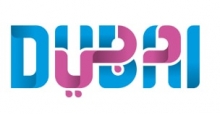Levels of disengagement at work have been growing for some time, as expectations of work-life balance shift, and the nature of modern work changes. Of particular concern are a growing number of surveys and studies producing worrying findings about the levels of stress, anxiety and disengagement at work. One of the most alarming, a Gallup poll from 2013, claimed that only 30% of employees were ‘engaged’ at work.
There may be no single source to the problem. Likely culprits include general economic insecurity after the financial crisis, which may cause employees to worry about their job security. It could also be that companies, facing their own financial challenges, are seeking to extract more and more from their staff, and not replacing those who leave, leading to burnout.
What role does technology have to play in this? One growing area of positive impact are collaborative technologies that are substantially aiding people to improve their work-life balance though having greater geographic flexibility. With costs of living in many of the world’s major cities spiralling, the middle classes are increasingly finding themselves spending long periods commuting, or losing much of their income on inner-city mortgages and rents. All of this has a knock-on effect on family life, well-being and stress levels. Communications technologies are making remote work easier than ever as the quality of file sharing and audio-visual communications tools improves.
In recent years, there has been much discussion about how to make working hours more flexible for employees. From the company’s perspective, there are the findings, such as those outlined by Nicholas Bloom and James Liang in the Harvard Business Review, that employees can be significantly more productive when working from home. From the workers’ perspective, there are the findings of Phyllis Moen and Erin L. Kelly, published this year in the American Sociological Review.
Here, employees stated that they “felt more control over their schedules, support from their bosses, and were more likely to say they had enough time to spend with their families”; they also experienced less burnout and greater job satisfaction. Elsewhere, Moen and Kelly, in a paper co-authored with Rachelle Hill, have contended that giving employees greater control over their hours appreciably reduces the risk of staff turnover. On this analysis, the move away from traditional office life – with the rigidity of the nine-to-five working day – appears to be a win-win scenario.
Technology has a significant role to play in this development. Dropbox, a US-based file-hosting service, commissioned a study by IPSOS Mori late last year which surveyed the working habits of over 4,000 employees based in the US, UK, France, Germany, Netherlands and Australia. The biggest discrepancy that they found in terms of happiness was between those employees who had neither flexible working hours nor collaboration tools (where 62% stated that they were happy), and those who had both (where the corresponding figure was 81%).
Overall, the study found that the more collaborative and flexible a worker was, the happier they were likely to be. Rob Baesman, the Head of Product for Dropbox Pro, Business, and Enterprise, explains how his company’s technology enables more freedom and thus greater happiness among its users. “At a high level, I think Dropbox is creating continuity between what happens in the office and wherever people are getting work done – that could be on a commute, at home, on an airplane, on the beach, at a football match…What that looks like underneath, if I really had to put a fine point on it, is really about making the location of the devices that people are getting their work done from truly stateless. It shouldn’t matter that I’m on a BYOD phone at my kid’s football match. I should be able to get my work and be productive wherever, whenever with the devices that I need.” When using Dropbox, says Baesman, “you’re not concerned about what’s on that hard drive or on that device. You’re not concerned about what the VPN is…The work is just there, reliably, wherever I am.”

image courtesy of Dropbox
The study notes that sitting physically next to colleagues at the same desk is becoming a thing of the past, with 65% of all surveyed employees now enjoying some form of flexibility at work. What’s more, this trend goes beyond the areas one might traditionally expect, with Baesman noting that the clients for Dropbox’s cloud-sharing services come from a variety of fields.
A typical example is Invision, a collaborative platform which allows designers in different countries and time zones rigorously to design, review and test products; the company has no headquarters, and each of its 140 employees work remotely. A more surprising client is Maple Hill Creamery, which began life as a single farm in upstate New York. “They’re a 14-person dairy start-up”, says Baesman, “and they’re now number one in sales in grass-fed yogurt in the US, and their entire team works from home offices…you don’t have to be a high-tech employee to make this transition [away from traditional office life]. It’s really, really fascinating to see just how widespread this is becoming.”

image courtesy of Dropbox
Yet this increased flexibility is not mutually advantageous in all cases. Experts have cautioned that there is a risk that workers are unable fully to relax and concentrate as they need to. According to “The Health and Wellbeing of Remote and Mobile Workers”, a 2009 paper published by the Institute of Occupational Medicine and the British Occupational Health Research Foundation, there is a possibility of greater isolation, and a tendency work to far longer. It is therefore vital that these flexible working hours are structured as carefully as possible. As noted by Professor Gail Kinman of the University of Bedfordshire, “if you keep picking at work, worrying about it, your systems never really go down to baseline so you don’t recover properly.”
Mindful tech
Dropbox’s Baesman anticipates that within two years a majority of employees will at least have the option of working remotely, a dramatic rise given that the current figure stands at just over a quarter (at 27% in the US and UK). But as work increasingly becomes a feature of home life, the need for techniques of well-being is all the more pressing given the potential risks of the always on culture.

image courtesy of Dropbox
One application currently proving useful is Headspace, which provides users with a series of short online lessons on how to meditate during the course of the day. Headspace, whose methodology is based upon the link between mindfulness and creativity, was launched by Andy Puddicombe and Rich Pierson in 2010 and has since attracted both the financial support and advocacy of a range of celebrities and investors.
Referred to by its founders as “a gym membership for the mind”, by the start of this year it was able to boast 5 million downloads and a market value of some £25 million, with 3 million users in over 150 countries. “Headspace’s teaching of mindful meditation can really help with focus”, explains Puddicombe, who trained as a monk before developing the application with Pierson, a former advertising executive.
“When you think about it, if you can focus on a subtle, boring object like your breath, then focusing on a work problem will be a walk in the park. Meditation teaches us to take our mind back to our breathing, this is a great tool when trying to get perspective on the racing thoughts in a stressed out mind.” Headspace, he says, also has advantages beyond improving creativity at work.
“Working from home/ remotely, and in fact technology in general presents a challenge for many people. The constant demands of alerts, notifications and social networks, can leave us feeling worn out and out of touch with the people we care about most”, observes Puddicombe. “Headspace not only allows individuals to make good use of the technology that’s available by using it for meditation. It also helps individuals become more mindful of their use of technology, meaning they are more able to put their phone down and be present in the moment.”
This article is part of a series called "Destination Innovation: Where next?". Click Here to read the full series.





